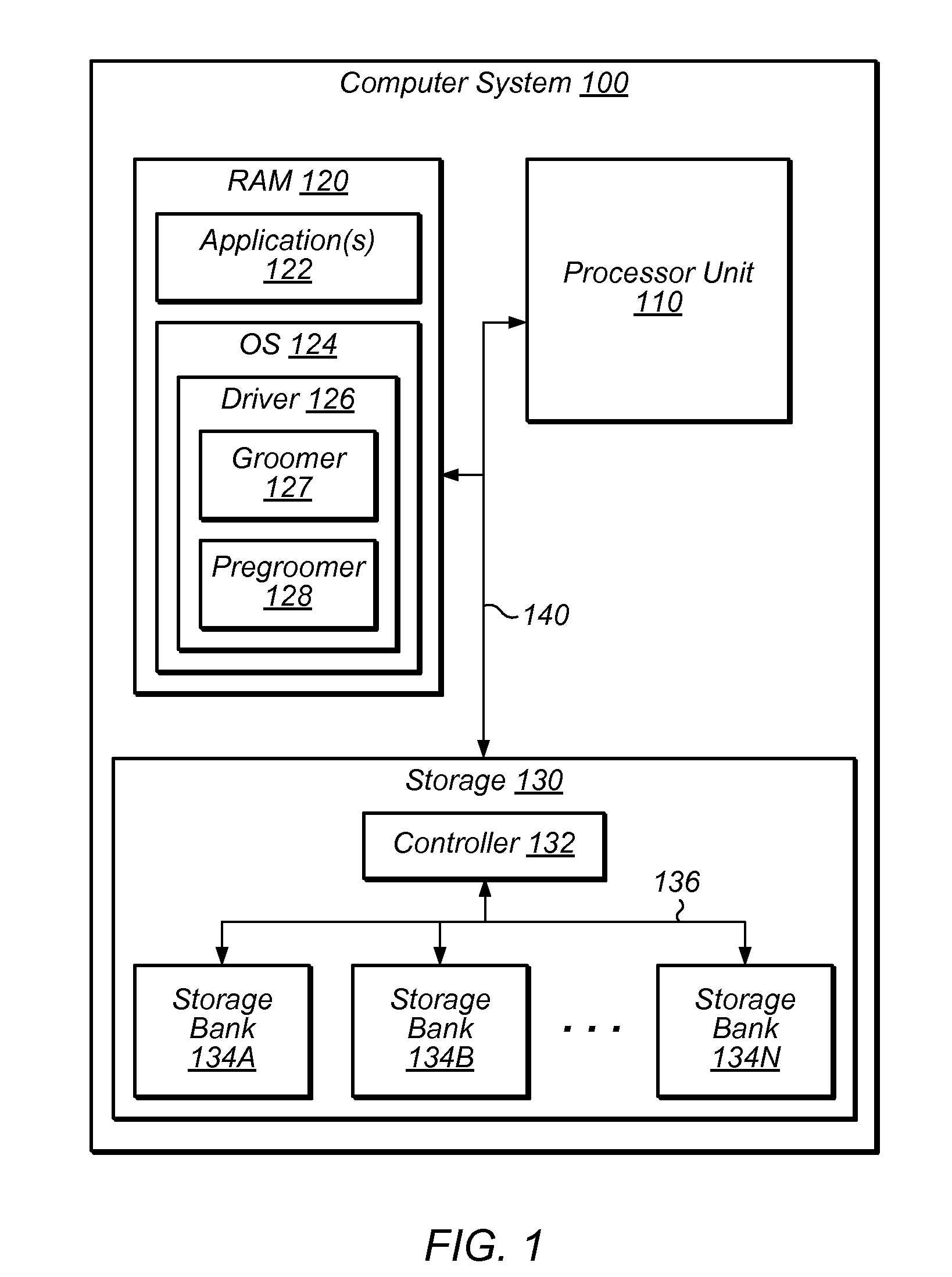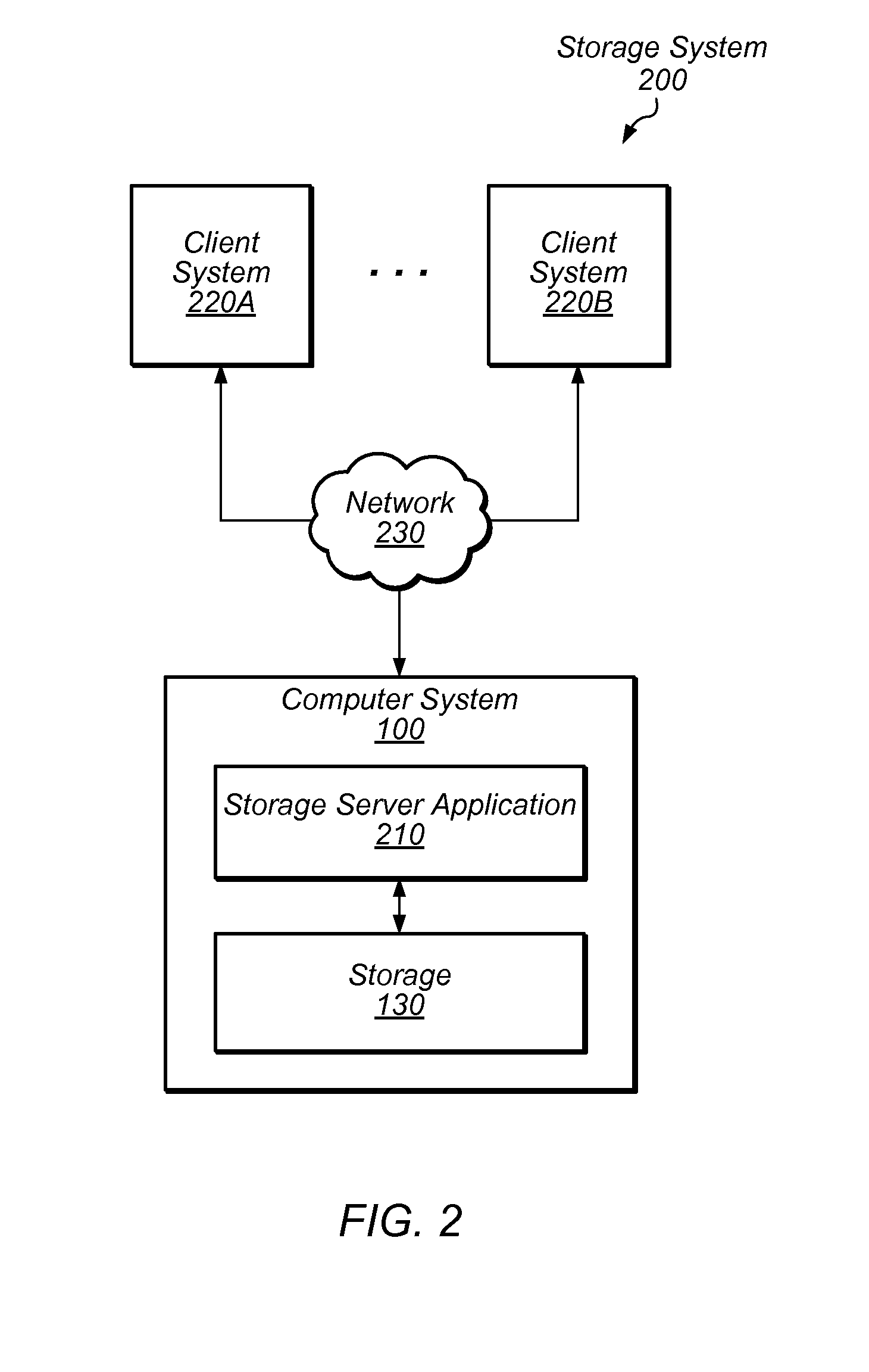Pregroomer for storage array
a technology of storage arrays and groomers, applied in the field of data storage, can solve the problems of increasing the likelihood that a storage block will be reclaimed, the transistors within the cells can only the cell cannot be erased and programmed a limited number of times, so as to increase the likelihood that the storage block is reclaimed and the likelihood of reclaiming the storage block
- Summary
- Abstract
- Description
- Claims
- Application Information
AI Technical Summary
Benefits of technology
Problems solved by technology
Method used
Image
Examples
Embodiment Construction
[0031]The disclosure initially describes, with reference to FIGS. 1 and 2, a computer system that executes a pregroomer process in conjunction with a solid-state storage array. To facilitate this description, logical and physical address spaces used to facilitate the implementation of a log-structure storage array are described with reference to FIGS. 3A-3C. A driver for the solid-state storage array is described with reference to FIGS. 4-6. Examples of the pregroomer process are then described in further detail with reference to FIGS. 7-12.
[0032]Turning now to FIG. 1, a block diagram of computer system 100 is depicted. Computer system 100 may be any suitable type of computer system such as a server, laptop, desktop, a mobile device, etc. In the illustrated embodiment, computer system 100 includes a processor unit 110, random access memory (RAM) 120, and storage 130 coupled together via an interconnect 140. As shown, RAM 120 may include program instructions for one or more applicati...
PUM
 Login to View More
Login to View More Abstract
Description
Claims
Application Information
 Login to View More
Login to View More - R&D
- Intellectual Property
- Life Sciences
- Materials
- Tech Scout
- Unparalleled Data Quality
- Higher Quality Content
- 60% Fewer Hallucinations
Browse by: Latest US Patents, China's latest patents, Technical Efficacy Thesaurus, Application Domain, Technology Topic, Popular Technical Reports.
© 2025 PatSnap. All rights reserved.Legal|Privacy policy|Modern Slavery Act Transparency Statement|Sitemap|About US| Contact US: help@patsnap.com



